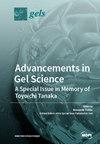The Influence of Sulfation Degree of Glycosaminoglycan-Functionalized 3D Collagen I Networks on Cytokine Profiles of In Vitro Macrophage–Fibroblast Cocultures
IF 5
3区 化学
Q1 POLYMER SCIENCE
引用次数: 0
Abstract
Cell–cell interactions between fibroblasts and immune cells, like macrophages, are influenced by interaction with the surrounding extracellular matrix during wound healing. In vitro hydrogel models that mimic and modulate these interactions, especially of soluble mediators like cytokines, may allow for a more detailed investigation of immunomodulatory processes. In the present study, a biomimetic extracellular matrix model based on fibrillar 3D collagen I networks with a functionalization with heparin or 6-ON-desulfated heparin, as mimics of naturally occurring heparan sulfate, was developed to modulate cytokine binding effects with the hydrogel matrix. The constitution and microstructure of the collagen I network were found to be stable throughout the 7-day culture period. A coculture study of primary human fibroblasts/myofibroblasts and M-CSF-stimulated macrophages was used to show its applicability to simulate processes of progressed wound healing. The quantification of secreted cytokines (IL-8, IL-10, IL-6, FGF-2) in the cell culture supernatant demonstrated the differential impact of glycosaminoglycan functionalization of the collagen I network. Most prominently, IL-6 and FGF-2 were shown to be regulated by the cell culture condition and network constitution, indicating changes in paracrine and autocrine cell–cell communication of the fibroblast–macrophage coculture. From this perspective, we consider our newly established in vitro hydrogel model suitable for mechanistic coculture analyses of primary human cells to unravel the role of extracellular matrix factors in key events of tissue regeneration and beyond.糖胺聚糖功能化三维胶原蛋白 I 网络硫酸化程度对体外巨噬细胞-成纤维细胞共培养物细胞因子谱的影响
在伤口愈合过程中,成纤维细胞与巨噬细胞等免疫细胞之间的细胞间相互作用会受到与周围细胞外基质相互作用的影响。体外水凝胶模型可模仿和调节这些相互作用,尤其是细胞因子等可溶性介质的相互作用,从而对免疫调节过程进行更详细的研究。在本研究中,为了调节细胞因子与水凝胶基质的结合效应,我们开发了一种基于纤维状三维胶原蛋白 I 网络的仿生细胞外基质模型,并用肝素或 6-ON-desulfated 肝素对其进行了功能化处理,以模拟天然存在的硫酸肝素。研究发现,胶原蛋白 I 网络的构成和微观结构在 7 天的培养过程中保持稳定。原代人类成纤维细胞/肌成纤维细胞与 M-CSF 刺激的巨噬细胞的共培养研究表明,这种方法适用于模拟伤口愈合过程。细胞培养上清液中分泌细胞因子(IL-8、IL-10、IL-6、FGF-2)的定量分析表明,胶原 I 网络的糖胺聚糖功能化会产生不同的影响。最突出的是,IL-6 和 FGF-2 受细胞培养条件和网络构成的调节,表明成纤维细胞-巨噬细胞共培养的旁分泌和自分泌细胞-细胞间通讯发生了变化。从这个角度看,我们认为我们新建立的体外水凝胶模型适合对原代人体细胞进行机理共培养分析,以揭示细胞外基质因子在组织再生及其他关键事件中的作用。
本文章由计算机程序翻译,如有差异,请以英文原文为准。
求助全文
约1分钟内获得全文
求助全文
文献相关原料
| 公司名称 | 产品信息 | 采购帮参考价格 |
|---|

 求助内容:
求助内容: 应助结果提醒方式:
应助结果提醒方式:


